process control, CIP, HVAC and energy management
Connecting
In many facilities, these systems are manual and standalone, with no coordination—other than human
As energy becomes more costly and product quality and food safety increasingly critical, integrating energy management, clean-in-place (CIP), process and environmental controls is becoming more practical and economical as digital controls provide the linking together of these systems—if not directly, then by making them available on the same device for operators and managers.
This article looks at the potential benefits of integrating energy management, process control and HVAC systems into a loosely or tightly coupled plant-wide system that improves product quality and saves energy as well. It provides some practical pointers on integrating these systems and what food or beverage facilities can expect from this linking together of systems.
To get neutral opinions on the subject, I spoke with engineering houses and A&E firms who are often the people that have to make all these disparate systems function together, and even if not digitally connected, they still have to be easily coordinated by facility operators.
For example, Gray Solutions, a Gray Company, has had the call to integrate building management systems (BMS) outputs into process controls to allow for real-time trending and reporting of building/utility systems in addition to production data.
Wayne Labs, Senior Technical Editor
Photo courtesy of Bill Nichols
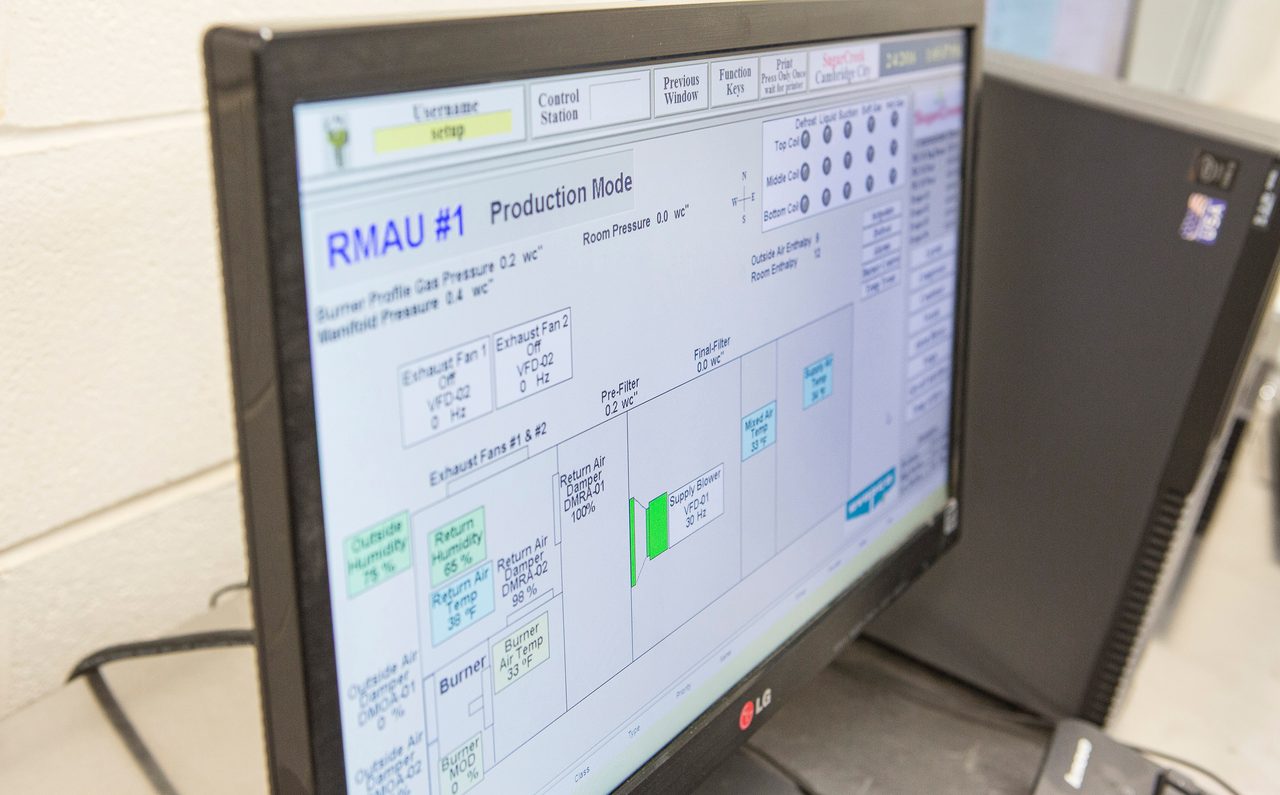
HVAC controls screen can be pulled up anywhere within the plant, making it easy for operators to check room pressures and temperatures plus take a look at burner controls. Photo courtesy of Ross Van Pelt, RVP Photography
CRB has implemented energy metering with respect to providing the physical meters for electrical power consumption, natural gas consumption, water consumption, waste output, and mechanical and process utility system monitoring such as steam, chilled water/chilled glycol and heating hot water/hot glycol usage.
Stellar’s engineering teams have experience in integrating systems within a facility or connecting facilities together. As with most engineering houses, they’re pretty system agnostic, so they’re not likely to push any one supplier’s controls equipment—whether for building automation or process controls.
Founded in 1979, Spec Engineering, also a Gray Company, has worked with large food and pet food manufacturers and has experience in integrating all sorts of systems—from processing to HVAC and CIP and material handling systems. This engineering group works with automation from several hardware vendors.
CIP automation/integration an important trend today
While there has been some interest in integrating process control systems with HVAC or BMS, the key system of interest in integrating with process controls is CIP. Of course, older production systems may not have CIP, or if they do, CIP may be manually operated, which means operators need to remember to switch a lot of specific valves in the right sequence. Today, smart mix-proof valves under the direction of the process control and/or CIP system can make the change between process and cleaning mode in a matter of seconds—with no error.
CIP is great for speed and efficiency, but the drawback is that the process line is down for the time period CIP is in use, says Andrew David Hager, BSME, PE, LEED-AP, CRB senior mechanical engineer. This may be fine for some processors who have the ability to take a process line down. For other processors with 24 hour operations, to implement CIP will require a second process line for redundancy or possibly a reduction in product output even with multiple lines in operation.
The interest in employing CIP integration has been around for some time, but knowing how to integrate the information into control sequences and measure the results is most important, says Stellar’s Brad Smith, director of business/product development. CIP should be integrated as it can have an impact on facility refrigeration loads and cause false loading of the plant. “You can also improve CIP efficiency by adding waste heat recovery and potable water preheat,” adds Smith.
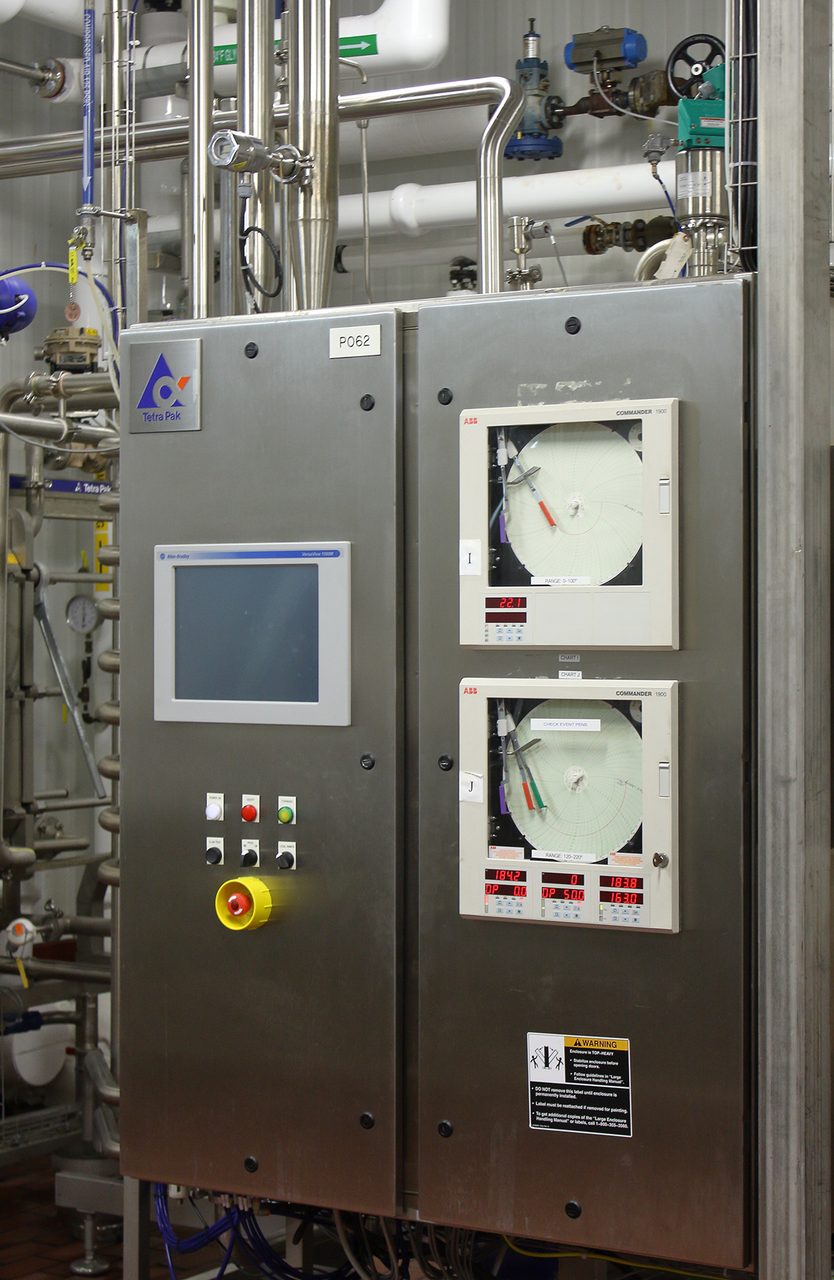
CIP control panel connects to CIP skid to the left and can connect to the plant-wide Ethernet and be integrated into process control and energy management systems to make CIP an integral part of the process. Photo courtesy of Wayne Labs
“CIP systems use three primary utilities that have energy inputs: steam from the boiler, air from the compressor, and electricity from the power distribution system,” says Jonathan Malakoff, subject matter expert liquid systems, Spec Engineering. The air utilized for valve controls and possible line purges is a relatively small capacity user, and electricity to run CIP skid supply pumps is typically a low requirement compared to the remainder of plant equipment.
However, depending upon the other simultaneous users of the plant boiler, the short-term steam requirements to heat quickly large batches of cleaning chemicals and water rinses to high temperatures could spike the demand, says Malakoff. This more frequently occurs in older, smaller boiler units that may have been outgrown and in steam piping systems that have been expanded through time but have undersized or inefficient plant headers and branches. Due to the nature of CIP operations, the CIP schedule may be able to be arranged to occur on second or third shifts at plants when those utilities are less taxed and costly to operate. Accordingly, CIP considerations can have a positive effect on an overall plant energy management program.
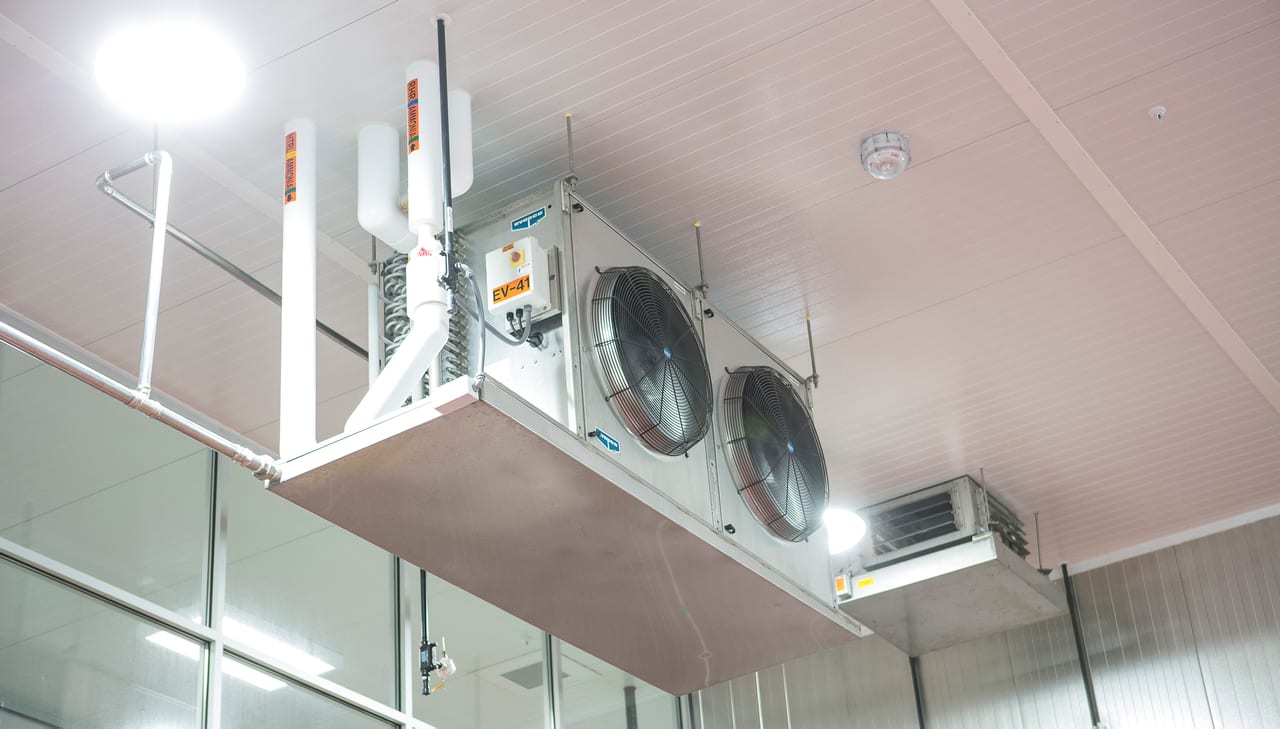
In a CIP mode, evaporators are shut down until cleaning is finished. Afterwards, the refrigeration system is restarted. Here is a case where CIP and HVAC controls can be teamed up with the process control system to make this process happen optimally and save energy. Photo courtesy of Ross Van Pelt, RVP Photography
Tracking down costs
As energy costs continue to increase, food and beverage manufacturers are taking a closer look to control these expenses to gain a critical competitive advantage, says Jeff Jendryk, vice president of business development, Spec Engineering. The key to reducing energy related expenses is to understand where they are coming from and how much is being consumed. With this information manufacturers can proactively manage their requirements, improve systems performance and reduce costs.
“We are currently seeing more customers wanting to know utility usage by major process area or equipment, where before it was more common to see only total site usage—or even only leverage quantities from monthly bills,” says Drew Goodall, director of process, Gray Solutions. Branch meters allow control systems to collect energy utilization at a more detailed level and easily tie this information back to system or equipment-run data. “We can then easily generate instantaneous, daily, weekly, or monthly reports comparing energy usage per unit of production. This is invaluable information to the operations and maintenance teams.”
Refrigeration and process loads typically account for the majority of energy consumption, so having them share dynamic load information makes the most sense, says Stellar’s Smith.
Integration and sharing information
While CIP may seem costly to implement, in the long run it can pay for itself. “CIP is a time saver,” says CRB’s Hager. While expensive at first cost, it can provide quick payback with reduced down time and less labor, and can decrease needed resources.
Hager, however, makes an important point: Plant HVAC systems during CIP do not function as they would under normal manufacturing conditions. During cleaning and disinfection, the HVAC systems are turned to full 100% outdoor air to flush the areas with outdoor air as the staff works to clean and disinfect. This requires significant energy for the HVAC system, especially when the cleaning and disinfection process is complete, and the HVAC system has to operate at full capacity to bring the area environment back into a controlled manufacturing environment.
So, what applications can benefit from the integration of CIP, HVAC and environmental systems? Gray Solutions’ Goodall sums it up: Applications with intensive heating, cooling and other air transfer systems—anywhere an exchange of utility media outside the building envelope is required— as well as any processes with rigorous water and wastewater utilization, benefit from energy management and process control integration. Pet food manufacturing is a great example since it is an energy-intensive process to cook, cool and sometimes freeze large amounts of product in short time periods, and then clean everything quickly.
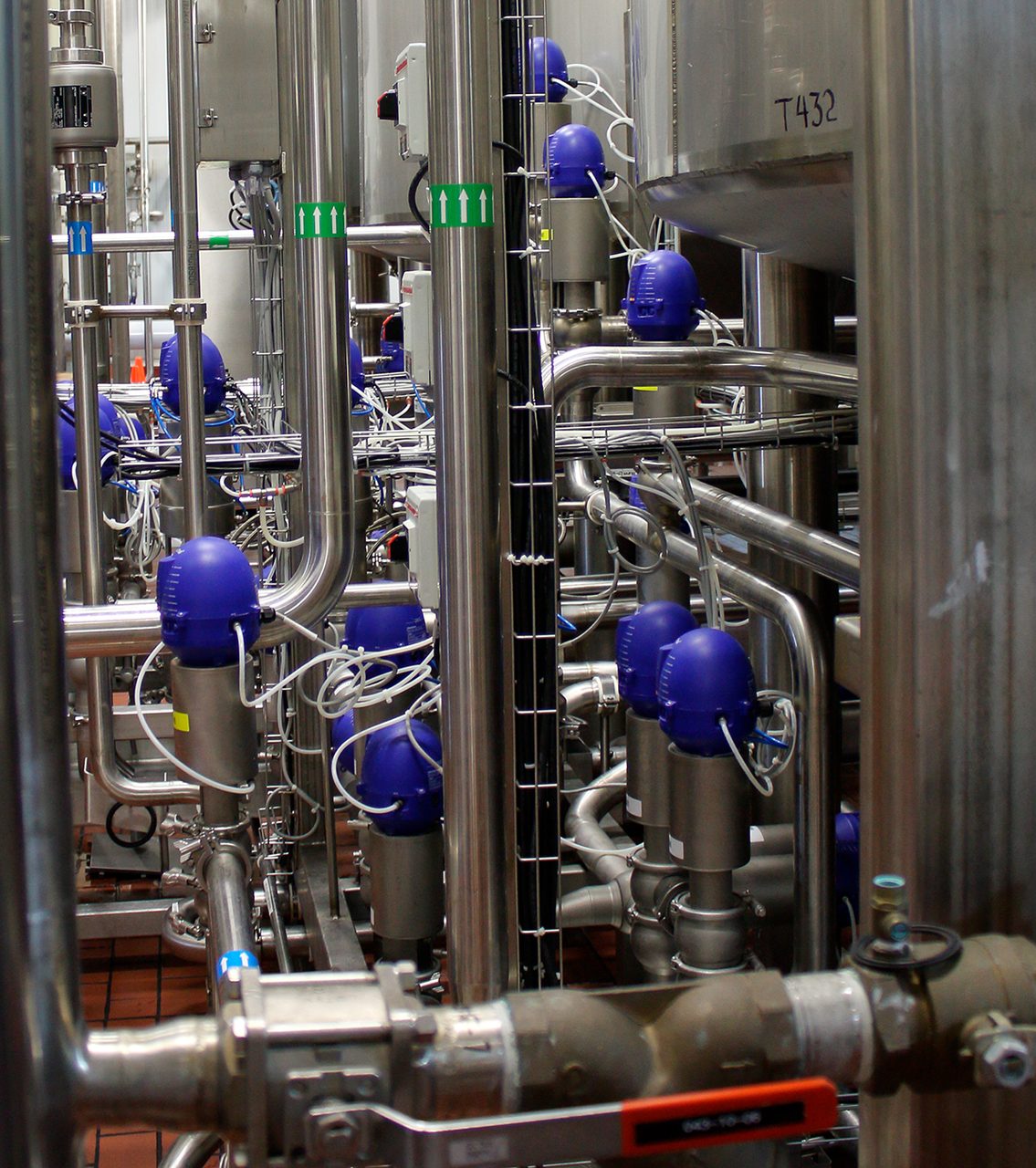
Smart, mix-proof valves with blue covers connect to the process control system, which is integrated with CIP to provide automatic switching between the process and cleaning, preventing operators from making costly mistakes when operating old manual valves. Photo courtesy of Wayne Labs
Typical solutions start with developing a commonality document to outline the conventional hardware and software solutions desired to produce the end state, says Gray Solutions’ Goodall. Once a design is completed and priced, certain elements may be removed or shifted to a phased implementation to meet budgetary requirements. Due to the rapid advances in technology, it often does not make sense to integrate an older (i.e., a no longer OEM-supported) system or technology into a new solution. Cost benefit or ROI is typically tied to reallocation of personnel, increased production throughput, or realized energy savings through tighter control/monitoring.
Is integration easier in a greenfield site?
Both new and old facilities can benefit from integration, says Jendryk. Depending on the age of current systems, larger paybacks are often found on older facilities.
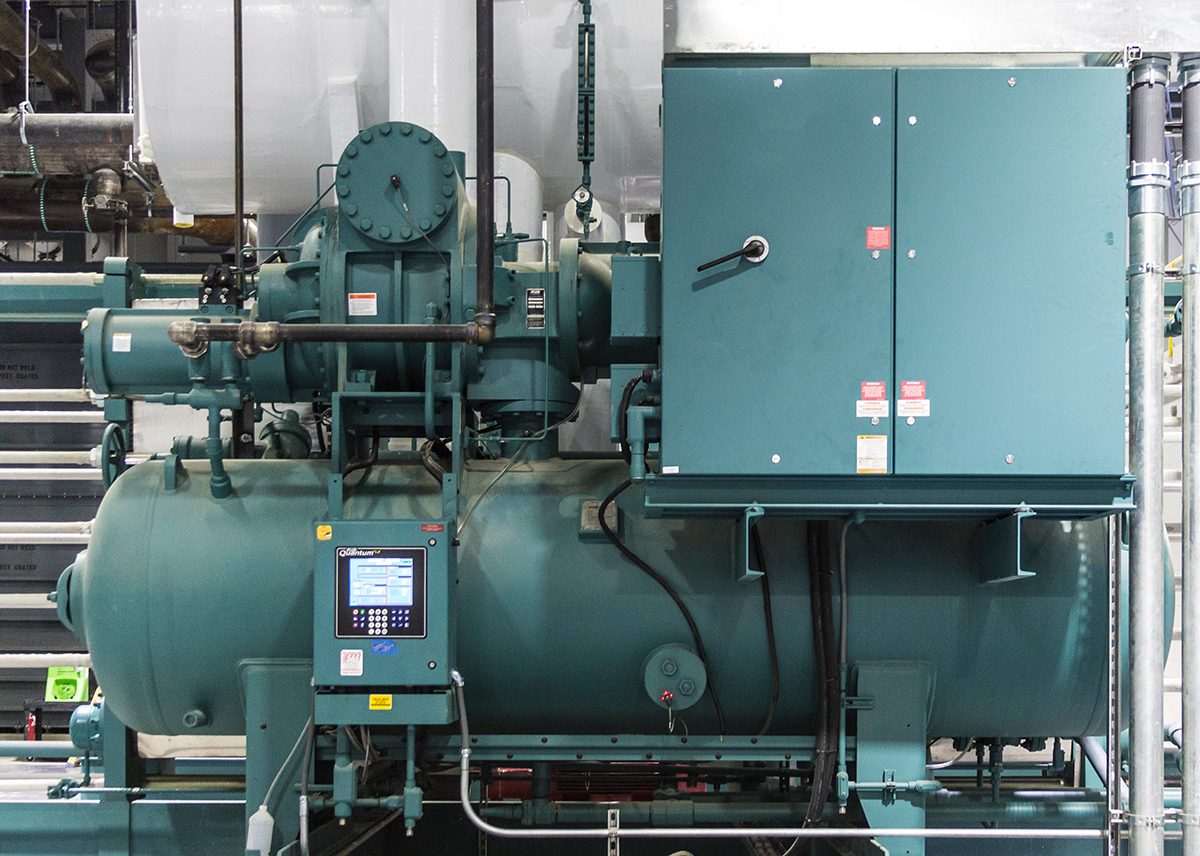
Today’s ammonia refrigeration compressors have local screens, but can also communicate via network systems to connect with remote control systems and share data with process controls and HVAC operator workstations. Photo courtesy of Bill Nichols
Fortunately, integration can be implemented in any facility, new or existing operations, says Goodall. New facilities allow for a one-time startup, where retrofits may be phased to be brought online during routine downtime.
The question of whether integration is more suited to a greenfield site is probably on the minds of facility operators and managers and corporate production managers constantly, says Hager. “When is the best time to upgrade versus the best time to build new?” It is a day-to-day thought to at least someone in each group. The answer is all about risk and reward: Doing the right thing at the right time and always looking ahead and planning ahead. Innovation will keep improving practices, which in turn drives more innovation. The “need” comes first because we all require a “need” in order to demonstrate a change is required.
While integration is easier when starting from scratch in a greenfield site, more important, as Hager points out, is that management needs to determine its needs and requirements. “If it’s not a design requirement, it likely won’t happen,” says Smith. Specifications will often require various systems to communicate with another vendor’s equipment, but then don’t go far enough in detailing the purpose of the connection. In these situations, the physical connection can be complete without any data exchange. Using the same company for multiple control applications such as process, refrigeration and HVAC can enhance integration and what information is shared.
Who’s best qualified to integrate process, HVAC systems?
While suppliers of process control/automation equipment know their systems well, and HVAC suppliers are also capable, it would seem that a broad range of experience would be needed to tie systems together for smooth data flow and obtaining actionable information. So, are suppliers up to the task, or is it better left to system integrators (SIs)?
“It all depends on the firm’s level of experience,” says Spec Solutions’ Jendryk. HVAC systems are becoming more complex with the need for specialization. As HVAC technology and design continue to become more sophisticated, it is important to make effective use of all the data available. Systems are being designed with lighting, energy metering, HVAC and other building systems to make effective building management system decisions.
“Consider opportunities to test integrations and gauge return in a smaller-scale environment.”
—David Hager, senior mechanical engineer, CRB

